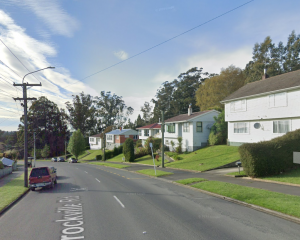A rare worm will have an "ecological" parcel of Caversham Valley land set aside as habitat which will be more than 2 times bigger than the area being taken to widen State Highway 1.
The habitat of the rare predatory peripatus worm has been at the centre of discussions between several stakeholders involved with the New Zealand Transport Agency's proposal to improve safety aspects of the upper section of SH1 through the Caversham Valley.
Through discussions with the Department of Conservation, the Dunedin City Council and Caversham Valley landowner and ecological advocate David Randle, the NZTA had "generally distilled" its basis for mitigation of the peripatus' habitat to three initiatives, project manager Simon Underwood said.
A translocation plan is to be developed before any roadworks are started and funding allocated to Doc and the DCC for a peripatus management plan.
Despite an "actual quantifiable effect" on the local ecology of the peripatus being unknown, the agency had accepted the highway project was likely to have an effect and had focused its efforts on planning to minimise and mitigate those affects, Mr Underwood said.
The agency had bought land on the southern-facing side of the valley to be used as an "ecological exchange" for three areas required for the highway expansion.
The agency's proposed expansion of SH1 requires three parcels of land: 3240sq m from the Caversham Valley Forest Reserve, 539sq m from Mr Randle's property and 1465sq m from the Lookout Point Reserve, Mr Underwood said.
A property recently bought by the agency would enable the exchange of 14,159sq m to use as habitat for the peripatus.
"This is just over 2.5 times the area of the above three parcels [of required land] combined," Mr Underwood told the hearings panel.












